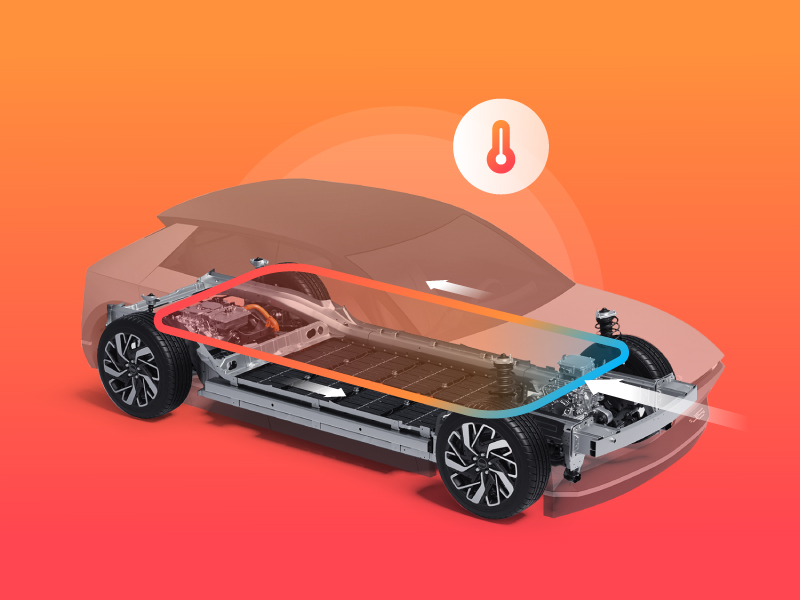Ioniq 5 N: Sophisticated thermal management unlocks performance of hottest Hyundai
- PostedPublished 11 December 2023
The Ioniq 5 N is Hyundai’s first performance electric vehicle (EV). As anticipated, this game-changer offers a range of enhancements over the regular model, not least its industry-leading thermal management system, a crucial consideration during development and specifically aimed at combating power degradation caused by excessive heat during demanding track driving conditions.

The Ioniq 5 N’s electric motors have undergone significant enhancements, enabling them to reach 21,000rpm. This is 6000rpm higher than the regular Ioniq 5, resulting in a top speed of 260km/h.
Combined outputs of 478kW and 770Nm surpass the related 430kW/740Nm Kia EV6 GT, with which the Ioniq 5 N shares a top speed.
However, what truly sets the Ioniq 5 N apart from the rest is its integration of cutting-edge innovations and a prioritisation of driver enjoyment with its array of ‘N focused systems’.
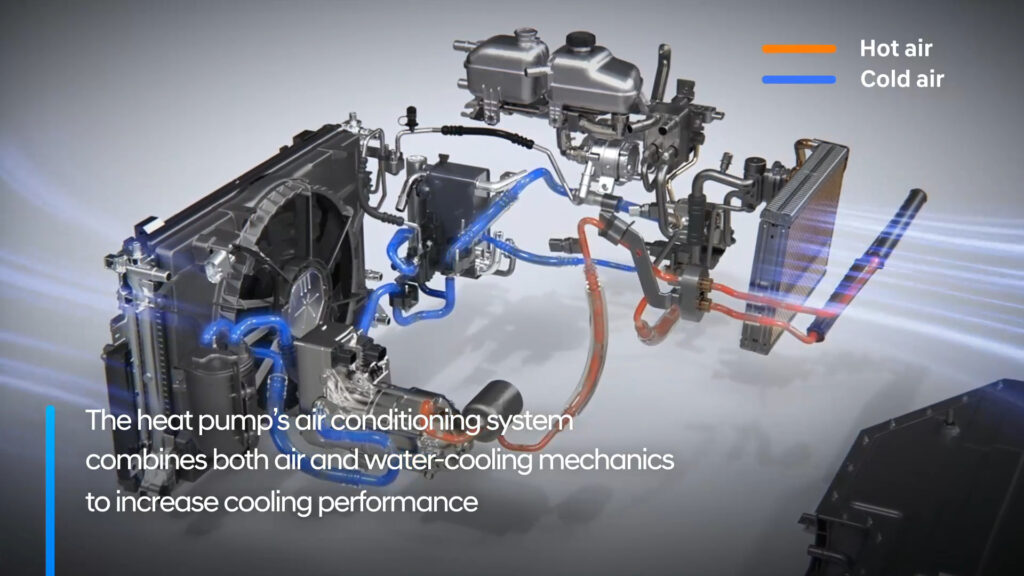
As Hyundai Motor UK president Ashley Andrew put it: “Ioniq 5 N is truly the first EV for the driving enthusiast, combining not just high performance and precision handling but also using state of the art technology to provide an emotional connection so far missing in performance EVs.”
To further optimise performance, Hyundai has fitted the Ioniq 5 N with a larger 84kWh battery capacity with next-generation chemistry providing higher energy density compared with the 77.4kWh pack of regular versions.
On top of this, a two-stage inverter has been cleverly integrated to enhance power output control and improves efficiency when converting the battery’s DC power to AC power to drive the electric motors.

Importantly, in the realm of EVs, effective thermal management is crucial for maintaining peak battery performance and managing heat distribution within the vehicle. Notably, during demanding usage, such as on the racetrack, battery cells tend to generate higher levels of heat, which can lead to various issues, including diminished battery lifespan, decreased power output, and potential safety hazards.
To address this, Hyundai equipped the Ioniq 5 N with an advanced track-developed battery thermal management system that goes the extra mile. This system incorporates larger independent radiators for both the battery and motor, as well as an upgraded battery chiller and motor oil cooler.
According to Hyundai this endows the Ioniq 5 N with “higher resistance to heat-induced power degradation – loss of maximum power due to overheating”.
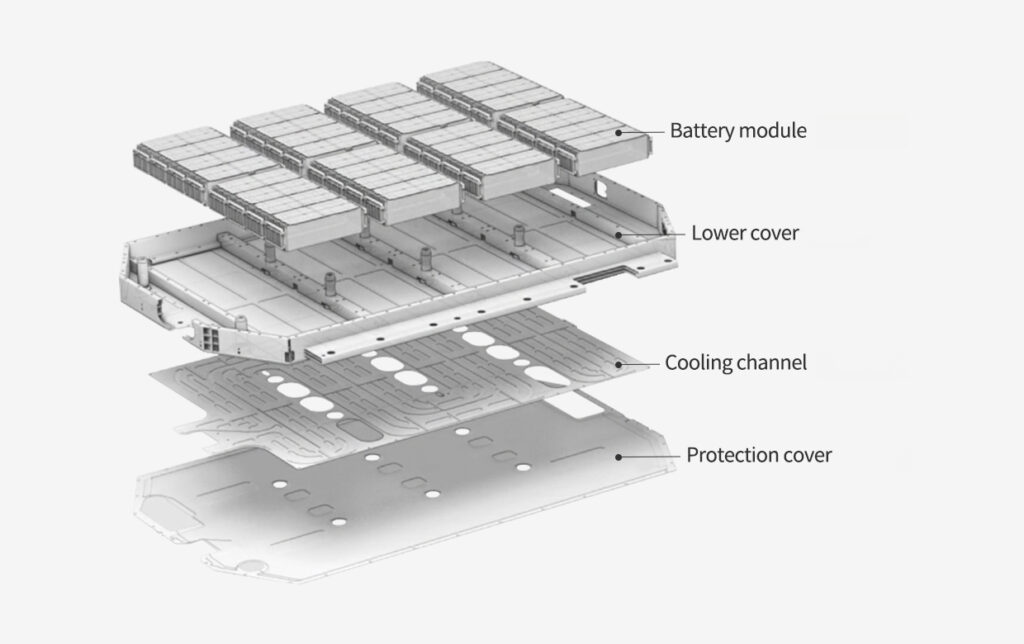
It is rare to put drivers in control of thermal management but advanced battery thermal management software developed specifically for the Ioniq 5 N enables drivers to do exactly that by deploying specific modes, such as various ‘N Battery Preconditioning’ functions for optimal performance in various driving scenarios.
In ‘Drag’ mode, the battery cells can be preheated to a temperature range of 30°C to 40°C, allowing for a brief burst of full power. In ‘Track’ mode, the software optimises the battery temperature for multiple laps by maintaining it within the range of 20°C to 30°C, ensuring the lowest possible temperature is achieved. Finally ‘N Race’ enhances battery endurance on the circuit.
This works by providing the driver with greater control over energy usage and creating an optimal performance window to achieve their driving targets.
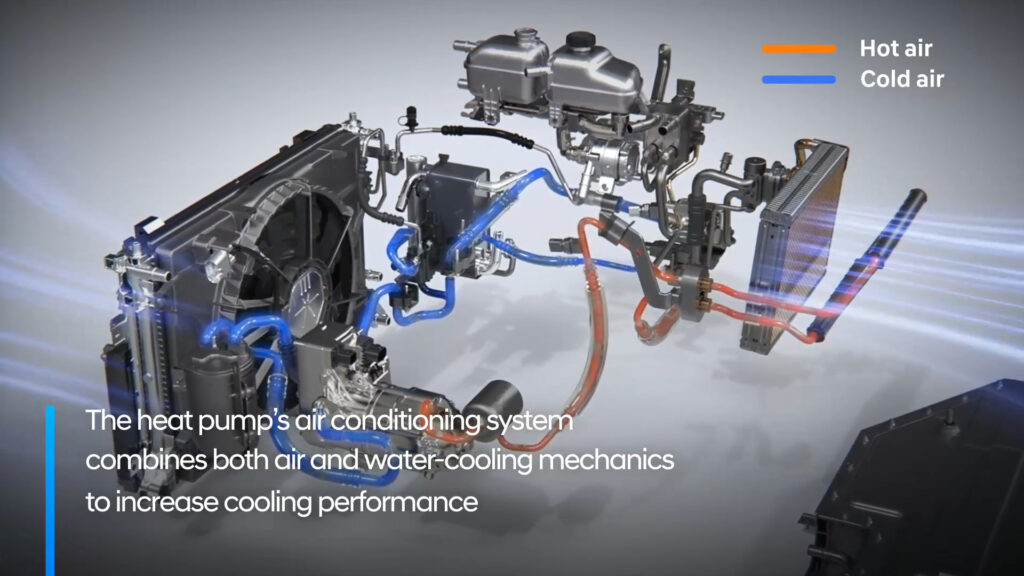
For example, the ‘Endurance’ setting maximises range on the racetrack by limiting peak power and resulting in a slower build-up of battery temperature. On the other hand, ‘Sprint’ mode prioritises power and offers shorter bursts of full energy, such as for overtaking.
The Ioniq 5 N’s track SOC (state of charge) function automatically calculates battery consumption per lap, providing accurate readouts to keep the driver informed.
Pitstops can also be short in EV terms, with a 350kWh ultra-fast DC charger topping up the battery from 10-80 per cent in just 18 minutes.
Development of the Ioniq 5 N required a significant commitment to thermal management in a collaboration between Hyundai’s R&D centres in Namyang, South Korea, and Rüsselsheim, Germany. The close proximity of Hyundai’s European development centre to the Nürburgring circuit has also played a pivotal role in shaping the first electric vehicle to be designed for track day performance.
Form and function combine in the model’s unique mesh grilles, air curtains, and flaps that aid in battery and motor cooling while aerodynamics are enhanced by a lip spoiler, big rear diffuser and 20mm drop over 21-inch Pirelli P-Zero tyres.
Much of this results in a more dynamic appearance, accentuated by a 50mm wider stance compared with regular Ioniq 5 variants.

Inside, the car features N-branded elements, such as bucket seats with illuminated logos, a distinct steering wheel design, and chequered-flag motifs.
Practicality has barely been compromised in the name of performance, the Ioniq 5 N’s centre console providing ample storage space, USB-C ports, and a wireless phone charging pad.
“Ioniq 5 N uses an array of tools to provide a driver centric driving experience whenever desired, as well as the ability of becoming a quiet, comfortable and efficient zero emission family SUV at the flick of a mode button,” said Mr Andrew.
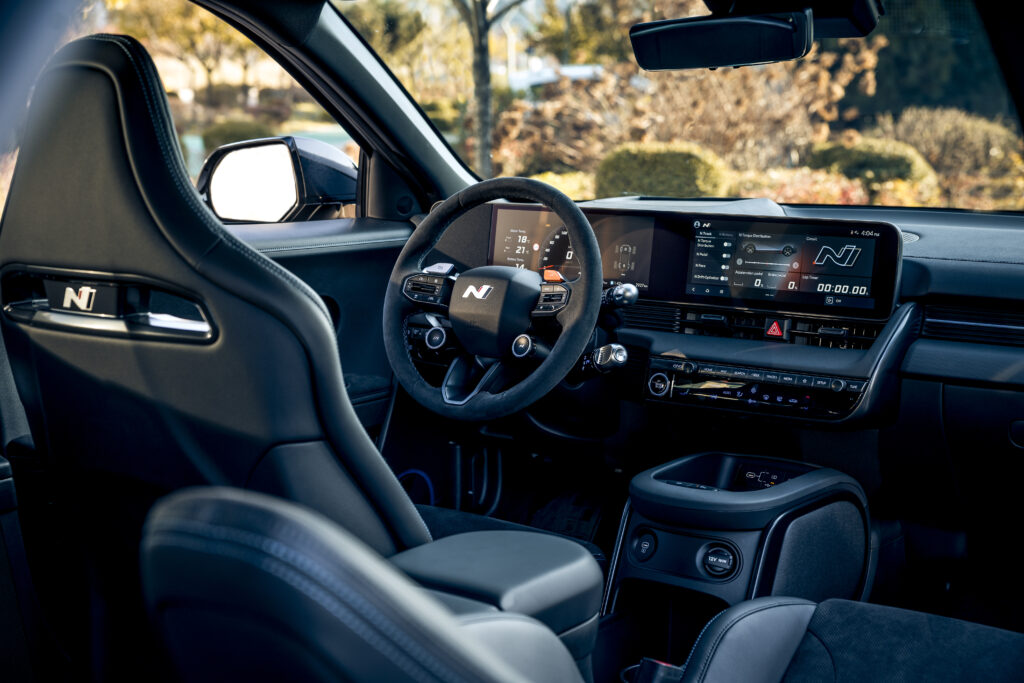
Despite the absence of published range data (Hyundai estimates 450km under the WLTP combined cycle) the Ioniq 5 N is likely to surpass the Kia EV6 GT’s range of 424km WLTP.
Both vehicles share the same platform and motors, although the EV6 GT has a slightly smaller battery capacity, with a difference of 6.6kWh.
Initial Australasian deliveries of the Ioniq 5 N are scheduled for the first quarter of 2024, with an Australian market sticker price of $111,000 before on-road costs, which is $27,000 more than the most expensive regular Ioniq 5 or $11,410 more than the Kia EV6 GT.
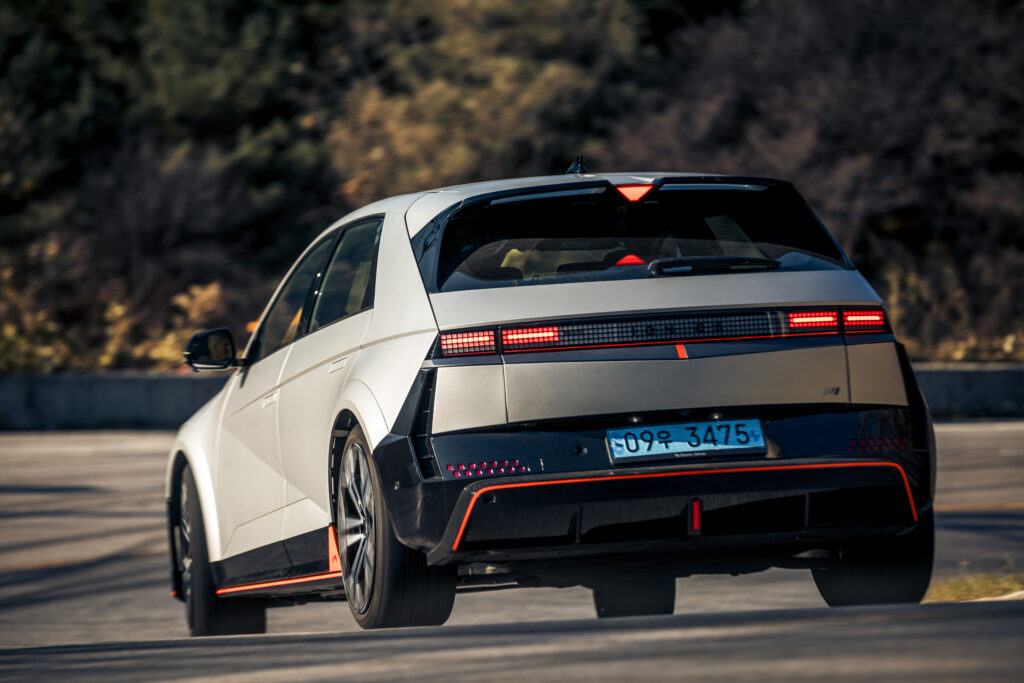
The fastest, most expensive Hyundai yet sure does pack a lot of tech, but is this a future classic or will the sheer pace of technological progress ensure the Ioniq 5 N is forgotten as quickly as quickly as it blasts from 0-100km/h?
Systems specific to the Ioniq 5 N:
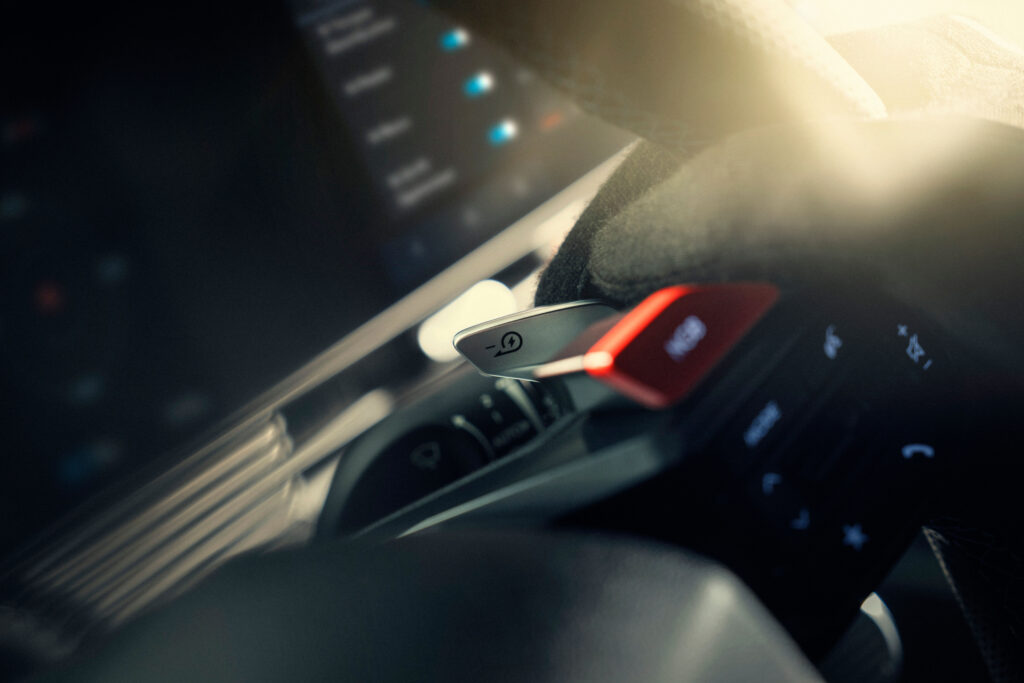
- N Grin Boost Function: This standout feature of the Ioniq 5 N delivers a 10-second power surge, pushing the total power output to an impressive 478 kW/740Nm. This boost translates into a 0-100 km/h acceleration time of just 3.4 seconds.
- N e-shift: Designed to replicate the experience of a high-performance petrol engine and eight-speed dual-clutch transmission, this system adjusts torque output from the Ioniq 5 N’s dual motors to simulate gear shifts and it can be controlled manually using paddle-shifters mounted on the steering wheel. When N e-shift is not in use, the car reverts to the characteristics of a single-speed EV.
- N Active Sound+: Delivers the sensory soundtrack of a turbo-petrol powered Hyundai N car based on speed and throttle position. Drivers can also choose a futuristic soundtrack from the 10-speaker infotainment system to match their mood and preferences.
- N Drift Optimiser: With its real-time control capabilities, this advanced feature ensures a desired drift angle is maintained by carefully balancing vehicle controls. It even includes a Torque Kick Drift function, which replicates the clutch kick action used to initiate a slide in rear-wheel drive internal combustion engine vehicles.
- N Pedal System: Developed to address the unique challenges posed by the weight and size of EVs while aiming to replicate the agile handling of Hyundai’s rally championship-winning i20 N WRC, this software feature provides instant turn-in response and enhanced throttle sensitivity. A new take on the one-pedal driving regenerative braking Hyundai calls i-Pedal, N Pedal prioritises dynamic cornering performance over energy efficiency. By harnessing deceleration, it generates a forceful weight transfer, resulting in sharper corner entry.
- N Torque Distribution: This system gives drivers the ability to fine-tune torque distribution between the front and rear wheels with 11 levels of adjustment, made possible by software control of the dual-motor drive system and electronic limited slip differential technology.
- N Launch Control: When activated, this feature provides drivers with three distinct traction levels that enable professional vehicle launches. Each level is calibrated to suit specific driving conditions, guaranteeing the fastest possible getaway.
- N Brake Regen: This feature blends enhanced regenerative braking with lightweight 400mm front discs and 360mm rear rotors; Hyundai’s largest multi-piston hydraulic brakes yet. Regen alone delivers industry-leading maximum deceleration of 0.6G in the strongest setting, as well as remaining active even during ABS activation, at which it contributes a maximum force of 0.2G. This combination minimises the risk of brake fade, increasing endurance on the track. When necessary, the mechanical brakes, which support left-foot braking, provide additional force.
- CategoriesIn SightGlass
- Tagselectric vehicles, EV, SightGlass News Issue 31, thermal management

